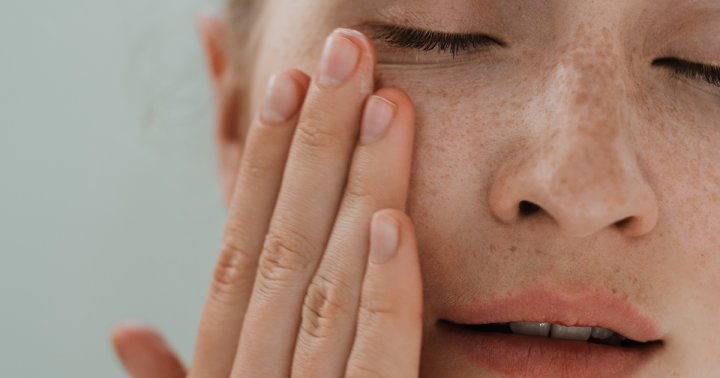Feeling Uninspired & Disconnected? Do This On Your Next Walk
"The most beautiful thing we can experience is the mysterious. It is the source of all true art and all science."

Image by BONNINSTUDIO / Stocksy August 20, 2024 We carefully vet all products and services featured on mindbodygreen using our Our selections are never influenced by the commissions earned from our links. I love walking. It's the easiest way to ensure I'm moving every day, pump up my brain, and give me legs I'm mighty proud of. The TikTok-famous "hot girl walk," invented by Mia Lind, is ingenious because it created a movement where people have started walking more mindfully. Now, if you're interested in taking your daily walk up a level, may I suggest trying out the "awe walk"? 
What is an awe walk?
In a study published in the scientific journal Emotion1, neuroscientist Virginia Sturm and her team at U.C. Berkeley studied the so-called awe walk, which is a way you can train yourself to morph an ordinary walk into one where you're delighted by surprises and inspiration.
There's nothing quite so amazing as having a sense of awe. As Albert Einstein eloquently puts it, "The most beautiful thing we can experience is the mysterious. It is the source of all true art and all science. He to whom this emotion is a stranger, who can no longer pause to wonder and stand rapt in awe, is as good as dead: his eyes are closed."
When we have a sense of awe, our (sometimes obsessive) focus on ourselves diminishes. Instead, we feel connected to things bigger than us and to other people. Awe not only can give you the good kind of goose bumps, but it also can prioritize the way we spend our mental energy, by taking us out of our own head. Like one of those high-beam lights switching off, your vision goes from tunnel to wide field.
And you don't need to travel to the ends of the earth, climb a mountain, or seek out novelty to evoke that feeling. The beauty of the awe walk is that you can incorporate it into your everyday life. It's all about the everyday amazing.
The benefits of taking an awe walk
The U.C. Berkeley team studied 60 older participants who took 15-minute outdoor walks for eight weeks. Half of them took a walk that oriented them to experiencing awe; the others did not.
Those in the first group reported greater joy and prosocial positive emotions (i.e., positive feelings toward other people) during their walks and smiled more intensely over the course of the study. They also had more prosocial positive emotions daily and a greater extent of decrease in daily distress as time passed.
The researchers concluded that cultivating a sense of awe may increase emotions that make people feel connected, as well as decrease the negative emotions that accelerate the decline.
Why walking is so good for you
There's also much to be said about the benefits of walking in general. In his book In Praise of Walking, neuroscientist Shane tells us about the amazing things that happen in your body when you walk. A cascade of rhythmic and neurochemical actions is triggered in your brain, making it fitter and healthier. Your brain also produces brain-derived neurotrophic factor (BDNF), which is akin to fertilizers for your brain cells. And then there's vascular endothelial growth factor (VEGF), which grows the blood vessels carrying nutrients to your brain.
We also oscillate between "mental time travel" (thinking about what to do tomorrow, planning for next year) and task-focused work—and it is this very flickering between states that help us to make important mental associations, thus fostering creativity.
And as I encourage my clients, when you walk after a meal, you lower your glycemic load, meaning your blood sugar levels fall. This supports your health in the long term and can potentially alter the way your body stores fat.
So, imagine what happens when you combine these physical and mental fitness benefits with that transcendental sense of awe that already reduces stress and inflammation2 while increasing feelings of gladness.
How to incorporate awe walks into your daily life
The slight issue many people I know have with the awe walk is that your phone has to be switched off, at least according to the version studied in Sturm's research. But what if you are an active digital citizen and like taking photographs? Or what if you have ADHD like me and actually focus better when you sometimes peer through your camera lens because your brain has a task to orient upon?
My spin on an awe walk—as I've detailed in my book This Is What Matters—is something I've tested with others, and I love it because (1) you can also make memories with your phone, and (2) you can even do it somewhere like Sephora if you so desire.
Here's how to do it:
1.
Consider the structure of your walk.
First, consider how you'd like to structure your awe walk:
2.
Start building your list of places to take awe walks.
These are places you can engage with easily in your everyday life:
These are places that you can plan for:
Two reflective questions you can engage in:
The takeaway
When we observe and appreciate the tiny wonders around us, an otherwise-benign walk where we're not rushing for a change metamorphoses into time well spent.
While taking a walk can't magically fix the factors in your life that feel trying, it can be a reset button that helps you regain control of the wiser, more controlled parts of your brain. And then, refreshed and reset, you can go back into your life to thoughtfully work on changing what you no longer want. Your walk may also be that precious window in your day when you feel accomplished because you've exercised, grounded because you've reflected, or simply more connected to the world around you.
And the thing is, you can never run out of awe.
Every sunrise and sunset is never the same. There's beauty lurking behind tempestuous skies. And we learn to appreciate vacations and special occasions more because we've trained ourselves to peer through the lens of Everyday Amazing. We train our brain's reticular activating system to filter out unnecessary information like distracting thoughts so we take in more delight.
And we can heartily, gratefully tell ourselves, "Thank you for showing up for me."

 Konoly
Konoly 

























.jpeg?trim=0,89,0,88&width=1200&height=800&crop=1200:800)




![Are You Still Optimizing for Rankings? AI Search May Not Care. [Webinar] via @sejournal, @hethr_campbell](https://www.searchenginejournal.com/wp-content/uploads/2025/06/1-1-307.png)


